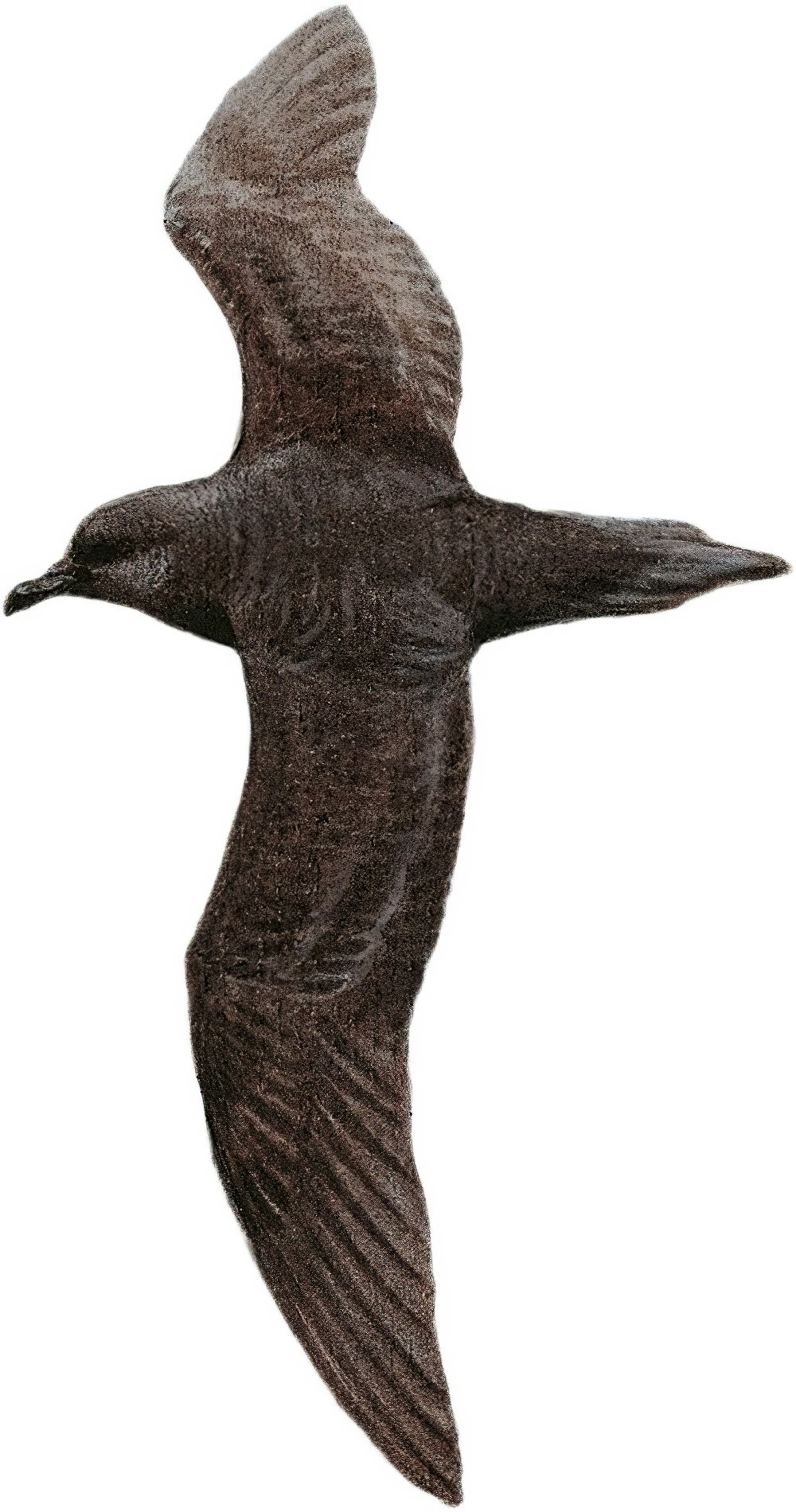Jouanin’s Petrel / Bulweria fallax

Jouanin's Petrel
SCI Name:
Protonym: Bulweria fallax Ois. 25 p.158,159,160
Taxonomy: Procellariiformes / Procellariidae / Bulweria
Taxonomy Code: joupet
Type Locality: northwestern Indian Ocean, lat. 12° 30'' N., long. 55° E.
Author: Jouanin
Publish Year: 1955
IUCN Status: Near Threatened
DEFINITIONS
BULWERIA
(Procellariidae; Ϯ Bulwer's Petrel B. bulwerii) Revd. James Bulwer (1794-1879) Scottish naturalist on Madeira 1825-1826 (cf. specific name Procellaria bulwerii Jardine & Selby, 1828); "256. THALASSIDROMA, Vig. ... c. Bulweria, Bp. 521. T. BULWERI, Bp. Pr. bulweri, Jard. Gould t. 448. Atl. eur. praes. merid." (Bonaparte 1843); "184. Bulweria, Bp. (Thalassidroma, p. Gr.) Rostrum mediocre: pedes brevissimi, robusti: cauda cuneata. Majores. M. Afr. Eur. m. 1. PROCELLARIA columbina, Moquin. (anjinho, Heineken. - bulweri, Jardine. - Puffinus columbinus, Webb. - Thalassidroma bulweri, Gr. - Bulweria columbina, Bp.) Webb et Berth. Canar. Av. p. 44. t. 4. f. 2. ... PROCELLARIINARUM gigas, quamvis statura Turdi viscivori!" (Bonaparte 1857); "Bulweria Bonaparte, Nuov. Ann. Sci. Nat. Bologna, 8, 1842 ([publ. Jan. 14] 1843), p. 426. Type, by monotypy, Procellaria bulwerii Jardine and Selby." (Peters, 1931, I, p. 67).
fallax
L. fallax, fallacis false, deceptive, deceiving < fallere to deceive. Epithet most frequently given to forms originally falsely identified, allocated to the wrong genus, or of uncertain relationships.
● "Differs from falki Hart. (Russian Turkestan) in being somewhat paler and duller on the upper side, the white eyebrow-stripe narrower; the crown of the head uniform fawn-colour; the chest paler and with narrow black bars on the flanks" (Sushkin 1927); "Hellmayr [1929] regards fallax as indistinguishable from pallida" (J. Peters 1934, II, 65, footnote) (subsp. Alectoris chukar).
● "I have two examples of a second species of this genus from Jamaica, which is, I suppose, undescribed. Before I had an opportunity of examining Mr. Osburn's specimens I was inclined to believe the latter were Mr. Gosse's E. cotta; but I now find that they are quite different, - Elainea fallax, as I propose to call it" (P. Sclater 1861) (Elaenia).
● "Io credei che questa specie potesse essere riferita al genere Euthyrhynchus, Schleg., che invece ho verificato essere identico al mio genere Timeliopsis" (Salvadori 1878) (Glycichaera).
● "The short crest of the males of this form furnishes the only certain character to distinguish it from huarandosae of the Chinchipe Valley. In ascertaining this measurement, the length of the occipital feathers should be taken rather than the distance from the exposed base of the culmen to the tip of the crest, since stretching or contraction of the skin of the head in preparation of the specimen will give a totally false conclusion" (J. Zimmer 1945) (subsp. Islerothraupis cristata).
● "This species bears a very close resemblance to Z. melodia, of which it is the western representative" (Baird 1854) (subsp. Melospiza melodia).
● "It was often killed by mistake, as it had a habit of perching motionless in low, thick brush or on the branch of a tall tree, where its plain colors made it difficult to identify. For this reason I think its name appropriate" (McGregor 1904) (subsp. Pachycephala philippinensis).
● "On the whole this bird has the appearance of a miniature Dicrurus, and may have to be placed in a new genus" (Ramsay 1885); "Ramsay had written on the label "Rhipidura (?) fallax (Ramsay) should be put in a new genus". This indicates the difficulty this species presents in classification using external characters" (Longmore 1991) (subsp. Symposiachrus axillaris).
UPPERCASE: current genus
Uppercase first letter: generic synonym
● and ● See: generic homonyms
lowercase: species and subspecies
●: early names, variants, mispellings
‡: extinct
†: type species
Gr.: ancient Greek
L.: Latin
<: derived from
syn: synonym of
/: separates historical and modern geographic names
ex: based on
TL: type locality
OD: original diagnosis (genus) or original description (species)












